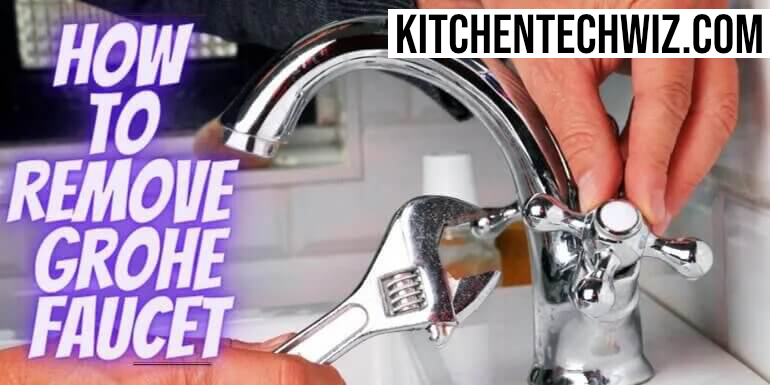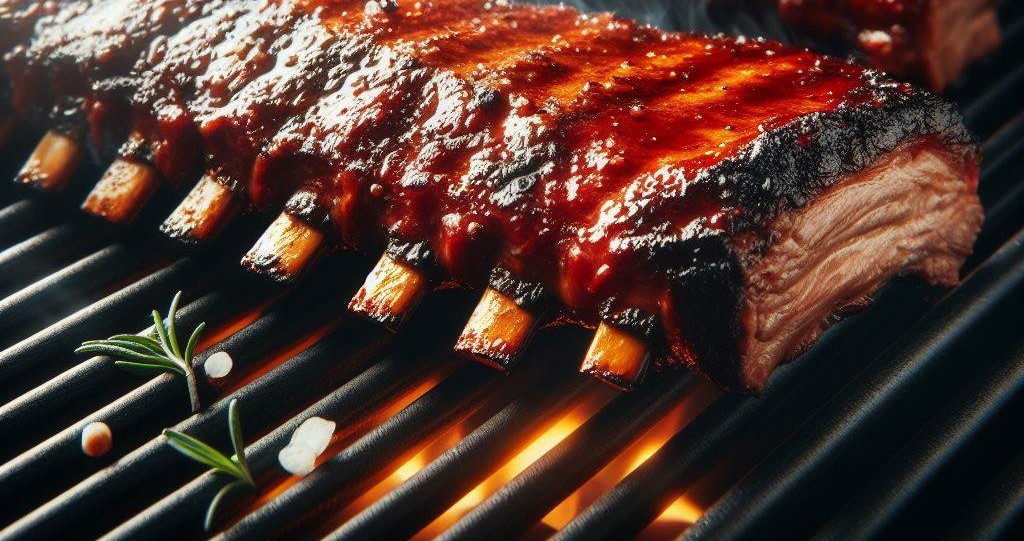Are you tired of struggling with a stubborn Grohe faucet handle that just won’t budge? Whether it’s due to wear and tear, mineral buildup, or simply a lack of maintenance, dealing with a stuck or malfunctioning faucet handle can be incredibly frustrating. But fear not, as we delve into the world of DIY plumbing solutions and provide you with step-by-step instructions on how to remove a Grohe faucet handle like a pro.
Grohe faucets can be removable when you want to replace it with a new one or a different model. Grohe faucets come in various models, and these faucets are removable like any other type of faucet. Removing a faucet usually seems hard as it entails disconnecting the water supply lines and unscrewing nuts. Grohe faucets are among the top faucets used in our modern kitchens.
To successfully remove a Grohe faucet, you will nhttps://kitchentechwiz.com/eed to follow the steps below;
Tools needed
The tools one needs to remove a Grohe faucet are the everyday tools in our homes.
- A flathead screwdriver
- Allen wrench
- Slip-joint pliers
- Bucket
Removing a Grohe faucet with two handles and a separate sprayer
1. Disconnecting the water lines
Remove everything that may be under the kitchen sink to give space for quick disconnection. Before attempting to start with the removal process, shutting the water off should be the first step. Locate the water valves under your sink and turn off the valves. There are usually two valves for hot and cold water. It disconnects the water supply to the faucet.
Turn the knobs clockwise until you feel it’s tight enough to ensure there is no water flowing to the faucet.
Also Read For: Best kitchen sink faucets for hard water
2. Drain any water remaining on the faucet
Turn the faucet on to let any remaining water on the faucet flow out. Excess water drains out, making it easy to work on a tap that’s not dripping. It will also release any pressure from the faucet. Place a bucket underneath to trap any flowing water when disconnecting under the sink. Chances are, they will be water dripping out, and you can trap them with a bucket or use a damp cloth.
3. Loosen the nuts
Under the sink, there are water lines that connect to the faucet. The hot and cold water lines with nuts, which needs to be let loose. Use a wrench to loosen the sprayer nuts. Pull them away to remove the water lines from the faucet completely.
Remove the nut that holds the faucet’s sprayer using a wrench and pull the hose off. Use a pair of pliers to turn the nuts attached to the faucet stems to remove the washers. Use your fingers to hold the connector and pull it down. It detaches the hose from the tap.
Faucet nuts secure the stems of the faucet handle and the center. To loosen this nut, use splint joint pliers and remove the washers. If the nuts are difficult to remove, you may use a lubricant, let it sit for some minutes before attempting to unscrew. These nuts are usually secured and may not come out of use in your hands. A wrench is required to be used at all times to ease the work.
Read: Kitchen Faucets Pull Down vs Pull Out: Which is Better?
4.Removing the c-shaped clip
Pry off the c-clip, located at the bottom of the countertop, with a flathead screwdriver. Alternatively, you can use needle-nose pliers to pull the c-clips off. Turn it 45 degrees for it to come off easily. It is on the side of the faucets center stem. The blade needs to be in the shaft and the c-clip’s top part. Add a little squeeze to it, and will come off. Ensure all washers get removed from the center of the faucet.
Using your fingers when prying it off ensures you hold it in place without it accidentally falling away. This way, you will not be able to lose it. You may end up removing it on your first attempt, but it does not come out easily; you can give it a try until you pry it off completely.
There are other clever ways you can use to avoid losing them on the floor. For instance, you can opt for a clear bag, so it catches them. Whatever method you choose to opt for, make sure they don’t fly away.
5. Removing the faucet
Remove the faucet and pull it from the counter. Pull out the sprayer and the hose from the counter as well.
Read: How to Remove Hard Water Buildup From Faucet: 10 Ways to Sparkling
How to remove a single handle with a pullout sprayer
1. Remove the faucet
Single handle faucets are common in most home kitchens. They are not hard to remove as there is only one handle on the countertop. To remove this type of Grohe faucet, disconnect the water supply. Place a bucket underneath the sink to trap any leaking water. Ensure any water that might be remaining is completely released. To do this, turn on the faucet, and the pressure will remove the remaining water.
With a wrench, turn the nuts securing the hoses counterclockwise to loosen them. Instead, you can also use a screwdriver. These tools are readily available in most homes, even if you are not a plumber. Pull and remove the water supply hoses away from the faucet.
2. The quick connect
A quick-connect, as the name suggests, takes a quicker time to disconnect. The quick-connect secures a sprayer hose to the faucet. With your fingers, hold the ring at the end, pushing it towards the connector without letting go of your fingers. Push the connector up and then pull down to detach the hose from the faucet simultaneously. Somebody should place his/her fingers at the top of the connector.
Use a splint joint pliers to remove the nut and the spacer, which holds together the faucet on the counter.
Pull out the head of the sprayer to remove the sprayer hose off the faucet.
Also Read For: How to remove kitchen faucet without basin wrench
Additional Information:
- Inspecting for Corrosion: Before beginning the removal process, inspect the area around the faucet handle for any signs of corrosion or rust buildup. If corrosion is present, you may need to use a penetrating lubricant to help loosen stubborn parts.
- Utilizing Lubricants: Applying a lubricant, such as WD-40 or a silicone-based lubricant, to the nuts and bolts can help ease the removal process, especially if they are tightly secured. Allow the lubricant to penetrate for several minutes before attempting to loosen the components.
- Exercising Patience: Removing a Grohe faucet handle may require patience, especially if the parts are old or have accumulated mineral deposits. Take your time and avoid using excessive force, as this could damage the faucet or surrounding fixtures.
- Replacing Seals and Washers: While you have the faucet disassembled, it’s a good idea to inspect and replace any worn seals or washers to prevent leaks and ensure optimal performance once the handle is reinstalled.
- Consulting Manufacturer’s Manual: If you encounter any difficulties during the removal process, refer to the manufacturer’s manual or website for specific instructions tailored to your Grohe faucet model. Additionally, you can reach out to Grohe customer support for assistance.
Read: How Long Do Kitchen Faucets Last?
Conclusion
People choose to remove their Grohe faucets for different reasons. It may be the faucet is old with worn-out threads and needs a replacement. Other reasons might be you want to upgrade to another model to match the aesthetic of your home. Whichever reason it may be, it will save you money from calling a plumber. If you can do it yourself, you necessarily do not need to hire a professional. With the guide above, you find removing a Grohe faucet to be simple and easy. You do not need many tools to pull a Grohe faucet.
Removing a Grohe faucet handle may seem like a daunting task at first, but with the right tools and knowledge, it can be a straightforward process. By following the step-by-step guide outlined in this article, you can effectively remove the handle without causing any damage to your faucet or plumbing system. Remember to exercise caution and take your time during the process to ensure success.



![16 Best Tabletop Propane Gas Grills 2024: [Also Charcoal & Electric]](https://kitchentechwiz.com/wp-content/uploads/2021/04/Best-Tabletop-Propane-Grill-1.jpg)

Leave a Reply